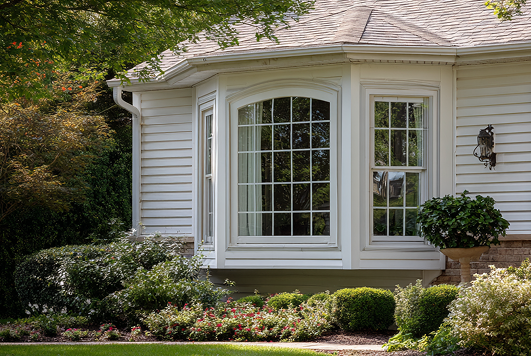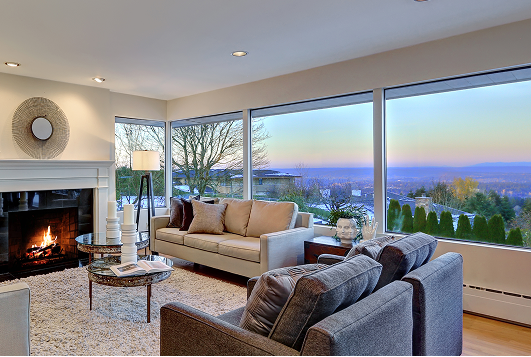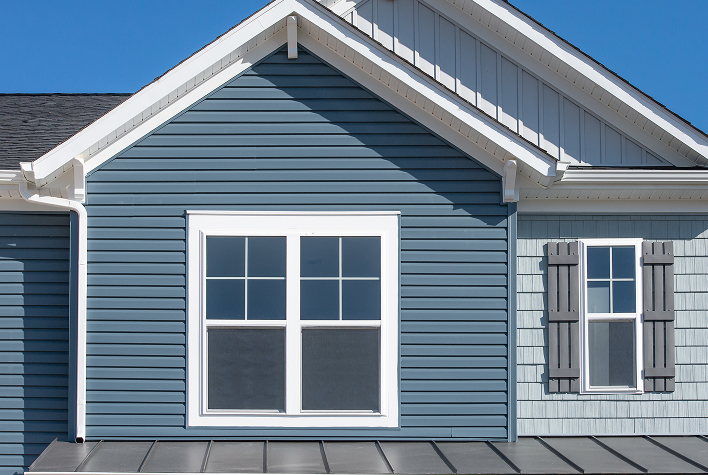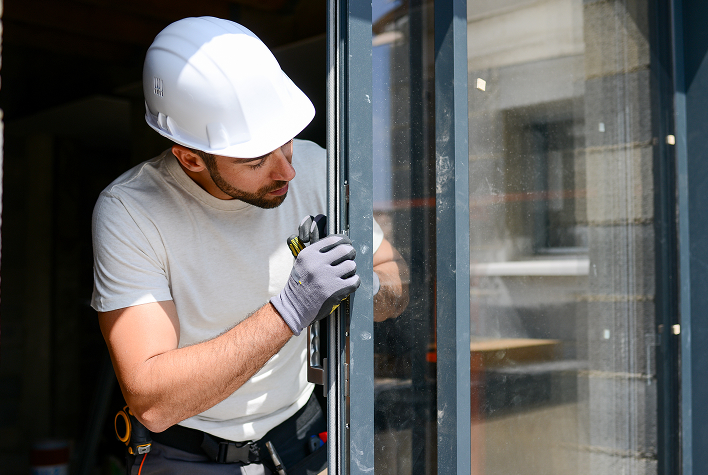
Key Points
- The total cost of a bay window depends on factors like size, type, material, and labor complexity.
- Vinyl and aluminum frames are more affordable, while wood and steel options offer premium aesthetics at higher prices.
- Installation may involve structural work, permits, or roof additions, which can increase expenses.
- Energy-efficient glass can help lower heating and cooling costs over time.
- Hiring an experienced professional ensures proper installation, long-lasting durability, and maximum energy efficiency for your new bay window.
What Are The Factors That Affect The Cost Of A Bay Window?
When planning to install a bay window, several factors can influence the overall cost, helping you budget more effectively. Let’s take a look at them below:
Size
Typically, bay window panes are about 3 feet wide, though the height can vary depending on the type and style.
Here are the estimated cost calculations for bay windows based on average sizes.
- Window SizeAverage Price for Bay Window
- 4 feet x 3 feet$400 - $1,000
- 6 feet x 3 feet$500 - $2,000
- 8 feet x 3 feet$550 - $2,500
- 10 feet x 3 feet$900 - $4,000
Bay Window Type
The type of bay window affects the price. For example, box bay windows are the cheapest and easiest to install, while bow windows are the most expensive due to their weight and installation difficulty.
TABLE
Brand
Brands offer bow windows in various materials, sizes, styles, and customization options. Prices vary, with well-known brands typically costing more than local manufacturers.
According to Statista, the top window and patio door retailers in the US by customer satisfaction in 2023 were Lowe’s, Renewal by Andersen, The Home Depot, and Window World, in that order.
Nevertheless, here are some window brands along with their pricing.
- Window BrandCost per Window
- Simonton$695 - $1,700
- Milgard$795 - $1,600
- Harvey$850 - $1,900
- Pella$895 - $1,800
- Andersen$895 - $1,900
Window Frame Material
When budgeting for your bay window, you need to consider the type of frame material you will be investing in, as each material has different price points.
Here are the prices for the most common window frame materials.
- Frame MaterialEstimated Price Range
- Aluminum$375 - $1,800
- Fiberglass$500 - $2,800
- Vinyl$600 - $2,800
- Wood$850 - $3,800
- Steel$2,000 - $6,800
Aluminum
Aluminum is durable, lightweight, resistant to bending and warping, and the most cost-effective option. However, it may only be ideal for houses in warmer climates because it doesn’t insulate very well.
Fiberglass
Fiberglass is energy-efficient, sturdy, and holds up well in humidity, preventing it from needing extra support. This makes it relatively low maintenance.
Vinyl
Vinyl bay windows are energy-efficient, durable, and easy to maintain. However, being prefabricated, they offer limited customization and may warp in hot climates.
Wood
Wooden window frames offer a beautiful, customizable look with various wood types. However, they can be costly to install, maintain, and repair. Wood may expand and contract due to humidity and temperature, leading to peeling or cracking over time.
Steel
Steel bay windows can be the most expensive option but are extremely durable, customizable, and maximize window space with thin frames. They are also less prone to corrosion than some other materials.
Bay Roof Addition
If your house’s roof extends over your bay window, great! If not, you’ll need to install a roof to protect it from rain and snow, ensuring durability.
You’ll need to hire a roofing contractor for this task. Besides labor costs, you’ll also need to pay for roofing materials, and the choice of material will influence the overall cost.
For instance, a copper roof is durable and attractive but costly, while asphalt shingles are cheaper and versatile but less durable and appealing.
Labor and Permits
Labor accounts for 40% to 60% of bay window installation costs due to their size and complexity. Installers may need extra help, especially for higher floors, which increases costs due to the need for special equipment.
Additional costs may arise from adding a roof over the bay window, repairing siding, and painting.
Be sure to check your local city and county regulations for permits, which typically range from $50 to $200, for legal permissions to alter your home’s structure.
Either your installers will handle the paperwork, or you will need to do it yourself.
What Other Factors Influence the Cost of a Bay Window?
When budgeting for the cost of a bay window, don’t forget to consider other factors like energy efficiency upgrades and structural work. Here’s a detailed overview:
Bay vs. Bow Windows
Although bay and bow windows may sound similar since they both protrude outward, they differ in structure and design.
Here’s a quick breakdown of their differences to help you make an informed decision when installing or purchasing a window frame:
TABLE
Design and Structure
Bay windows typically have three panels – a fixed center window and two operable side windows, creating a more angular look.
On the other hand, bow windows consist of four or more windows, forming a gentle curve like an archery bow.
Space Requirements
Since bay windows don’t require much horizontal space, they are suitable for smaller rooms like cozy living areas or breakfast nooks.
However, bow windows need more wall space, making them ideal for larger living rooms and dining rooms.
Ventilation and Light
Bay windows provide ventilation through the operable side windows and allow plenty of natural light through the large central window. On the other hand, bow windows offer superior panoramic views and enhanced natural light due to their multiple panes.
Cost and Installation
Bay windows are less expensive and easier to install compared to bow windows. Bow windows are more costly due to the higher number of window panels and the complexity of their curved design, which also makes installation more challenging.
What are the Pros and Cons of Bay Windows?
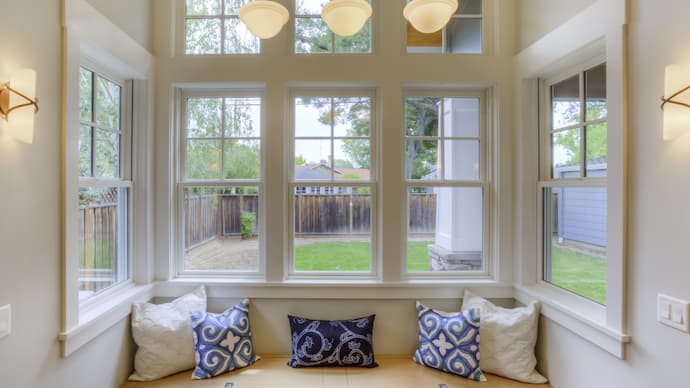
Bay windows offer several advantages and disadvantages that homeowners should consider before installation.
Pros of Bay Windows
Cons of Bay Windows
Should You DIY or Hire a Professional for Installing Bay Windows?
While you can save 40-60% on labor by installing bay windows yourself, the process is complex and challenging for DIYers.
Bay window installation requires skill and experience. Mistakes can affect performance, energy efficiency, and aesthetics, leading to costly fixes, air leaks, water damage, or structural issues. Handling large windows and tools is dangerous, posing risks of injury from broken glass or falls.
Successful DIY installation requires expertise in window installation, carpentry, insulation, drywall, and possibly roofing.
Therefore, we recommend hiring a professional for bay window installation. Professionals have the experience and tools to ensure correct and efficient work. Plus, professional installations often come with warranties, providing peace of mind and protection against future issues.
You can still save money by handling preparatory tasks like removing old windows or preparing the site, balancing cost savings with quality installation.
Questions to Ask Related to Bay Window Cost
When considering the cost of installing or replacing a bay window, it’s important to ask several key questions from your window installer/contractor to ensure you get an accurate estimate and the best value for your investment.
Here are some important questions to ask:
Expert Tips for Saving Money on Bay Window Installation
Here are some expert tips for you to save money when installing a bay window:
Conclusion
A bay window can cost you anywhere between $950 and $7,500. What you end up paying depends on the size and type of window, the frame material, the brand, whether it’s a replacement or a new installation, and labor cost.
Labor can make up 40-60% of the total cost, but hiring a professional is worth it for the long-term value. You can use our Homebuddy tool to find expert and trusted bay window installers near you and quickly get started!
Frequently Asked Questions
Does a bay window add value to a home?
Yes, bay windows can add value to a home by increasing natural light, enhancing aesthetic appeal, and providing additional space and ventilation. They can also boost market value and energy efficiency.
Do bay windows add square footage?
Yes, bay windows can add square footage to a home. They protrude outward from the main walls, creating additional floor space inside the room. This extra space can be used for seating, storage, or simply to enhance the room’s look and functionality.
Do you need planning permission to put in a bay window?
You typically need planning permission to add a new bay window, as it is treated as an extension. If replacing an existing bay window, permission is generally not required. Always check with your local planning authority, especially for installations at the front of the house or in conservation areas.
What is the most common type of bay window?
The most common type of bay window is the canted bay window. It features a flat front with angled sides and is typically found on the first level of homes and buildings.
Are bay windows outdated?
Bay windows are not outdated. They have regained popularity in recent years due to their ability to add natural light, improve home aesthetics, and create additional interior space.
Can you swap a regular window for a bay window?
Yes, it’s possible to swap a regular window for a bay window. This process typically involves enlarging the existing window opening and ensuring the home’s structure can support the bay window’s weight.
